I hate mounting scopes. From applying the proper torque weight to finding the proper eye relief to lapping the rings, installing a scope drives the type-A perfectionist in me insane. The worst part? Leveling the reticle. By the conclusion of that process, I’m more likely to have pulled an eye muscle squinting through the scope than I am to have aligned the reticle perpendicular to the bore’s X-axis.
Fed up with eyeballing and Home Depot bubble levels, I finally reached out to Wheeler Engineering and Straight Shot, LLC. Both companies have designed devices that, ostensibly, take the guesswork out of reticle leveling. These aren’t the only options on the market: Badger Ordnance and Arisaka Defense offer similar products. But the Level Level Level, the Professional Leveling System, and the Segway Reticle Leveler are among the most cost-effective options and, in my experience, the most ubiquitous.
Does Leveling a Scope’s Reticle Really Matter?
The short answer is, “It depends.” Within about 200 yards, a very slight cant to your reticle won’t dictate whether you take down a whitetail. Beyond that, and especially if you’re shooting for precision accuracy, even a small cant will throw off your point of impact.
The science is simple, and I’ve found no better explanation than the video below from the National Shooting Sports Foundation and former Army Ranger sniper team leader Ryan Cleckner:
Cleckner’s tutorial highlights the importance of a level rifle, but the same principle applies to the scope. If a shooter levels the reticle for a shot, but the reticle isn’t perpendicular to the bore of the gun, any shots beyond the zero distance won’t correctly compensate for bullet drop and will fly to the right or left. The magnitude of error will depend on how many degrees the scope departs from the level, but anyone shooting for distance needs to get as close to perfect as possible.
Level Up

From left to right: the Segway Reticle Leveler from Straight Shot, LLC, the Wheeler Level Level Level, and the Wheeler Professional Leveling System.
The products below represent three different price points, but none are more expensive than $50. For $13.99 on Amazon, Wheeler’s Level Level Level is the cheapest of the three—and the one most dependent on a suitable firearm.
The Level Level Level works using two levels: the action level and the scope level. Users place the action level in the action and the scope level on the elevation turret to ensure that both the gun and the scope are level with one another.
The problem? The action level only seems to fit in certain firearms. I tried installing it on a Ruger 10/22, a .308 Weatherby Vanguard, and an AR-15, and the action level didn’t fit in any of them. Furthermore, even if the action level did “fit,” I wouldn’t have any real way to confirm the level of the gun’s bore.
To get around this issue, the action level can also be placed on a picatinny rail. This isn’t ideal, as the magnet on the level doesn’t adhere to aluminum, and it won’t work if the scope is mounted too low. But it’s not a bad solution for, say, an AR scope mounted on tall rings. It’s certainly better than nothing.
SEE ALSO: 3 Tips for Keeping Your Rifle Zeroed – Preventative Maintenance
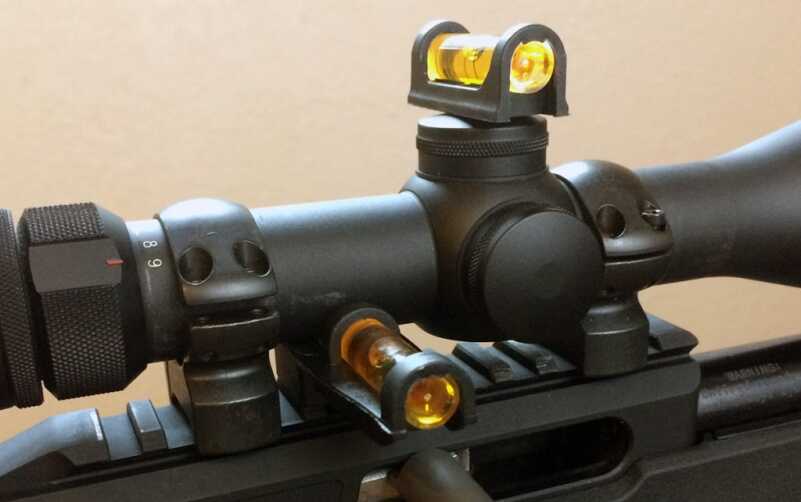
To work around this problem, the action level can also be placed on the picatinny rail, provided the scope is mounted high enough.
The second product I tested, the Segway Reticle Leveler from Straight Shot, LLC., costs only $6 more than the Level Level Level, but it represents a far greater value.
The Segway Leveler works on any scope mounting system that uses a level base. Users place the device’s metal alignment bar under the body of the scope, then align the scope’s reticle with the bars on the ears of the device. The package also includes a rubber band that can be attached to each ear and ensures the bar stays flush with the rail.
The system is simple and easy to use, but, more importantly, it doesn’t rely on the reticle being in perfect alignment with the elevation turret. Both Wheeler products I tested use a small level placed on the top of the scope’s elevation adjustment knob. This method assumes that 1) the turret has a flat surface on which to place the level and 2) the reticle inside the scope is in perfect alignment with the knob.
On the scope I used for this test, neither of these assumptions turned out to be true. It isn’t a nice scope (by any means), but why would you purchase a device that can only be used on certain kinds of scopes? The Segway Leveler’s design can be used on virtually any scope that mounts to a Picatinny rail or other level surface.
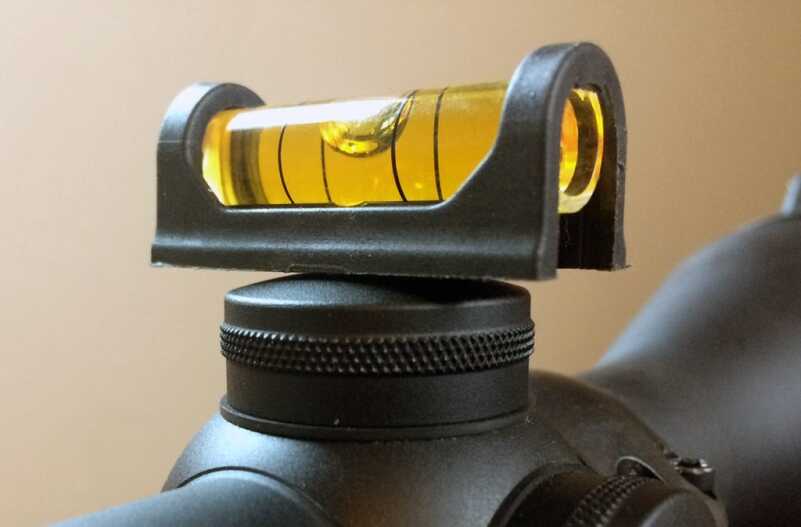
The rounded top turret on my scope has a small flat circle, but it wasn’t large enough to be reliable. You can also try removing the turret cap and sometimes you’ll have better luck with the turret.
Of course, this system relies on the base being level with the bore, but so do most scope leveling systems, including the more expensive Wheeler product below. I also found that focusing on both the reticle and the Segway’s lines simultaneously is more difficult than I expected. Not impossible, but the perfectionist in me couldn’t be 100% certain the reticle’s lines were aligned with the Segway’s.
SEE ALSO: Intro to Precision Rifle Series — Mindset, Equipment & Skills
The Wheeler Professional Leveling System is the most expensive product I tested, running around $45 on Amazon. Its strength lies in its ability to find the bore level without having to fit anything in the action or underneath the scope. Users begin by attaching the barrel level clamp to the barrel and placing the reference level on a flat surface on the gun’s receiver. The reference level ensures a level bore, and the barrel level clamp can be adjusted to match. Now the reference level can be removed, and as long as the barrel level clamp isn’t bumped, it can be used to keep the bore level as the scope is installed.

For both Wheeler products, it’s important that your gun is in a vice or a rest that allows enough movement to get the bore level.

The Wheeler system gives users a reference point for the bore alignment that doesn’t get in the way of the scope or the rings.
The directions instruct users to place the reference level on the scope’s elevation turret. This works, again, if the turret is flat and you’re confident it’s aligned with the reticle. With my scope, I decided to use a plumb line. I found a piece of string, attached it to my doorframe, tied a heavy object on the other end, and aligned the Y-axis of my reticle with the string. I checked the barrel clamp to ensure the bore was still level and cinched down my scope rings.
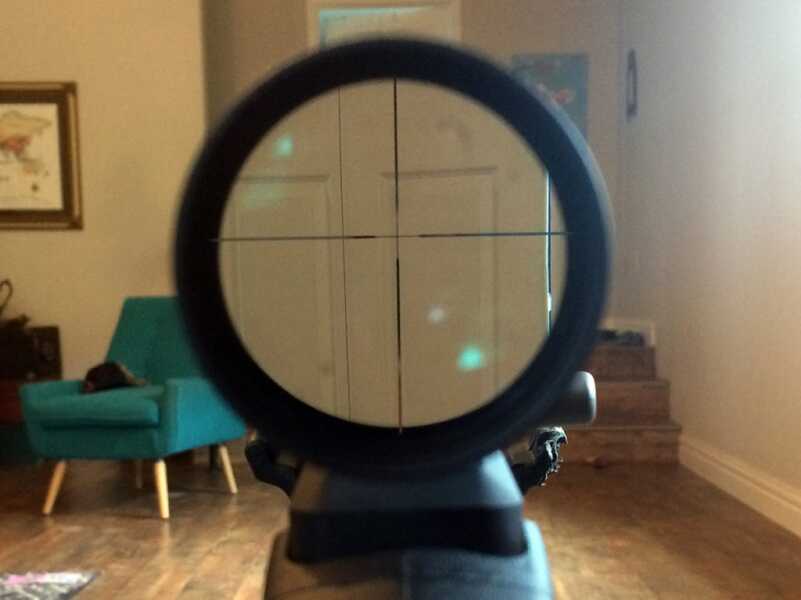
Because I don’t believe my scope’s elevation turret is aligned with the reticle, I used a plumb line instead of the provided reference level.
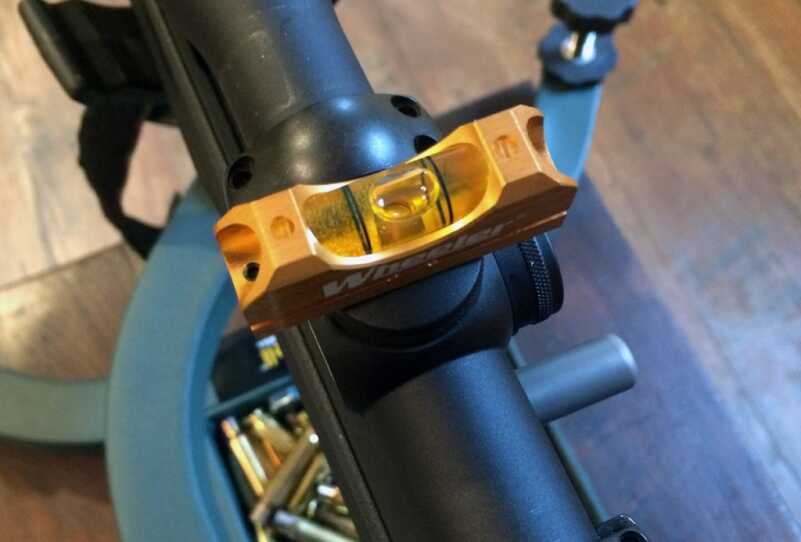
After leveling my reticle using a plumb line, I confirmed that the top turret isn’t actually aligned with the reticle. Surprise, surprise.
Conclusion
While you can find other ways to level a scope, the three products I tested all help take the headache out of the process. The Level Level Level is cheap and easy to use (provided it fits in your rifle), the Segway Leveler is portable and versatile, and the Wheeler Professional Leveling System is thorough and ultra-reliable (especially when confirmed with a plumb line).
If you’re planning to range out that new 6.5 Creedmoor, be sure your scope is dead level before running through 100 rounds trying to hit your range’s 1000-yard target. And a level scope isn’t just important for long-range nerds. When that twelve-point buck walks across the pasture in November, you want to make sure not to let him get away, and that starts with a proper scope installation.

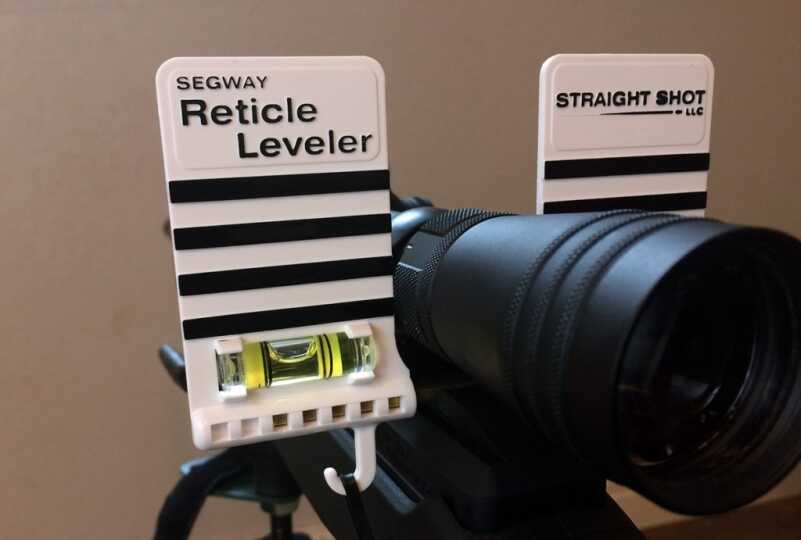
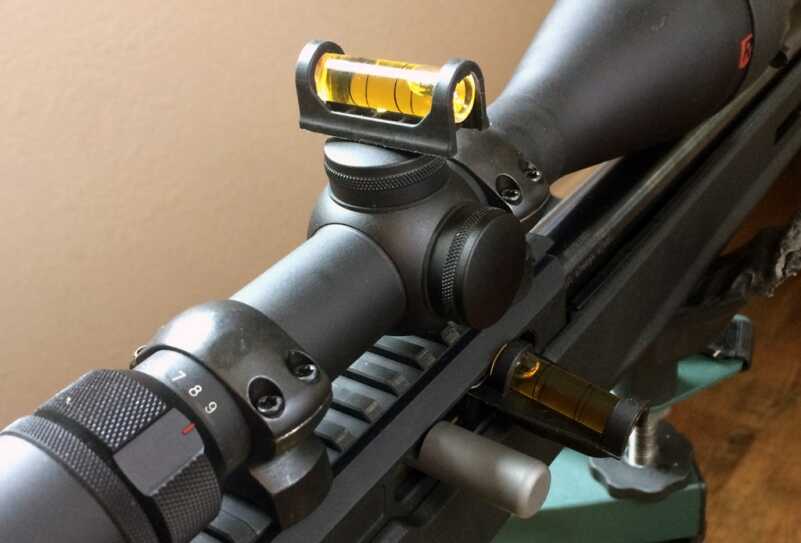

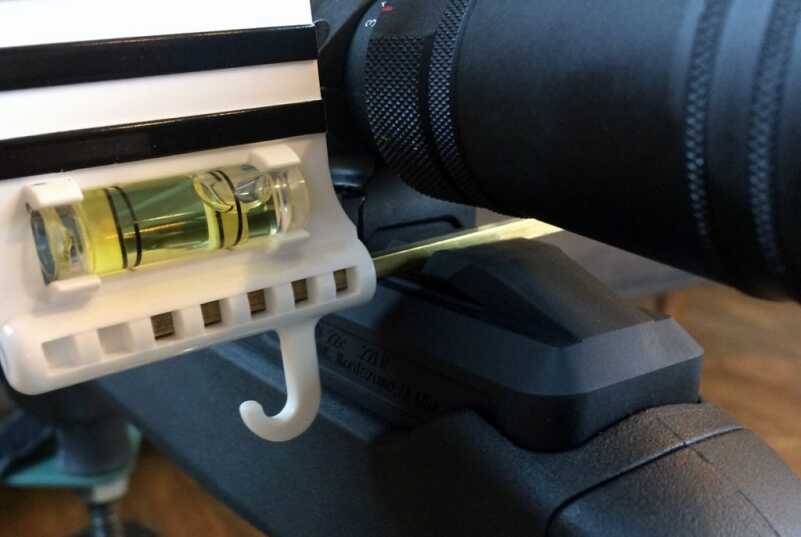

I picked up an Arisaka Leveler for about $30 a couple of weeks ago. It’s a mechanical system that aligns the top of the rifle with the bottom of the scope turret assembly (where the scope underside is flat).
I needed it to level scopes on a bunch of ARs, and for that it is just about perfect. If the space between the scope/picatinny rail is less than 1/10″ it won’t have enough space to work, but it works the rest just fine.
No looking thru the reticle or goofing around – just put the base on the rail and run the triangular shim (kit has 2, large & small) into the slot in the base and viola! The scope is mechanically leveled, just sock-down the screws to 25 lbs and you’re done in record time. Wish I found this thing years ago!
https://arisakadefense.com/products/optic-leveler
FYI, to place a level “on” the elevation “turret” you have to unscrew and remove the turret “cap”.
In the photos he has it on the turret cap, I think he meant that it goes on the cap and not the turret itself. Top of the turret is not always gonna be flat like the cap is.
The thought process usually started with – those are for Old Guys – I can attest to that now…
The proceedure I use now is to loosely mount the scope and mounts to the point it doesn’t slide around but can be moved. Check for proper eye relief, then, if you have one, a gun vise makes it easy to securely mount the gun. It’s a cleared weapon – yes? from the muzzle end look through the scope and visualize the cross hairs. If difficult to see put a white sheet of paper somewhere behind the stock. Here’s the hard part: ballance a 6 inch plastic rule across a flat portion of the gun. The stock, receiver, the aft sight, matching blocks on the stock beside the barrel… Look at the reticle and make the horizontals match the edge of the rule as close as you can. Secure without overtightening in a cross pattern the mount bases and scope clamps. Check the images for alignment often. The eye is quite good at detecting misalignment.
This may help someone in the situation of wanting to try a scope but questioning the additional equipment as part of the first purchase. No doubt that the equipment this article is addressing is necessary for precise long range shooting. In my case a scope eliminated guessing which of the three front posts was the real one.
Why not a metal machinists rule? All of mine had been bent and rebent over the years – the plastic one was still straight…
Those little black plastic levels from Wheeler are horrible. I bought two sets to get my order to the amount for a discount and free shipping a couple of years ago. I checked all of them against multiple levels and the bottom base was way off. So I called Wheeler to have them swapped out and both sets of replacements were also way off. I ended up pulling out the bubble level and earth magnets and junking the plastic bodies. I do have the Wheeler Professional Leveling kit and it works fine. I use a Versacraddle to hold the rifles, the leveling kit, a Dewalt laser leveling kit that does vertical and horizontal lines and then I check it against a plumbline with hi-vis orange running line that they sell for fly reels. It’s a bit of a process, but doesn’t take long to get it dialed in right once you have done the process a couple of times. The Versacraddle is worth every penny and I highly recommend it if you do a lot of work on your firearms. It’s nice and portable so you can take it with you on trips and for doing stuff for friends. I scored their Blue Mags handgun mounts when they were clearancing them awhile back. You can still find them for sale on fleaBay sometimes. I use the 1911 mount when building 1911’s and it makes life a lot easier since you can lock it in any direction. I am going to buy the Badger Ordnance Dead Level Scope Leveling Device some time soon. It’s a little more expensive than the rest of the leveling devices out there, but it has gotten good reviews so far and worth trying it out.
Obsessing about a level and plumb reticle (assuming it also is INSIDE the scope, i.e. are the crosshairs really perpendicular, and are they — whether etched or wire — assembled straight up and down relative to the scope adjustment knobs?) does not necessarily get you a virtually perfect setup. What if you hold the rifle in a canted position? Aside from benchrest shooting, how many times will you really have a position that is similar to what yielded your level reticle?
Regardless, here’s what I do:
1) on your backyard fence or whatever you can see from your table where the rifle will sit for this task, affix a yardstick or 36″+ level in the vertical position, or a piece of string (pink is nice) with a weight on the bottom (making it plumb). You’ll want to tack the yardstick in place after ensuring it’s plumb.
2) set the rifle in a cleaning cradle (e.g. MTM product) or whatever will hold it steady enough yet still allow you to move the rifle a bit for fine tuning.
3) affix a B-Square level to the Picatinny-style base on the rifle, and have the scope mounted in the rings with them not being tight yet, but eye relief properly adjusted.
4) tilt the rifle so the B-Square level bubble is centered. Then peek through the scope and align the vertical reticle segment with the vertical reference point on your back fence. Snug up the rings, checking periodically that your rifle is still level and that the reticle is still vertically aligned.
Ta-da.
A thought for getting things level is to incorporate a digital level offered by Craftsman, et al instead of using a bubble for feedback you get real data, i.e. in tenths of a degree if you are level or perpendicular with setting up your barreled action, then onto your scope itself. Takes a little more time obviously, but pays off as reading a digital level is so much more precise than using bubbles. I ditto using a plumb line to get the vertical in line which should corroborate information used with the digital level. The digital levels can also be used at home for leveling pictures, building walls, etc.
Yeah. I have a digital angle finder. Have it from Woodcraft for setting the perfect angle on my chop saw. It works on the scope really easy. Zero it out on the barrel then please it up to the front glass on the scope and tighten it down when it’s a perfect 90 degree.
The wheeler pro level actually works very well, if u use it correctly. If ur elevation turret isn’t flat up top then u unscrew the turret cover and you’ll notice the actual adjustment knobs for the turret are flat. In ur type scope u used in this review the real turret is actually under the turret cover. Which is what u were trying to use as the turret and hope the threaded on cover is inline 100% with the actual turret, its usually not. So u take the cover off and lay the level centered up on ur actual adjustable turret, not cover. I have used the Wheeler Professional Scope Leveling system on 3 dif brands of scopes and 6 scopes total. They’re a Nightforce NXS 8-32×56 with MOAR-T reticle, Sightron S-Tac 4-20×50 w/MOA-2 reticle, Leupold VX-7 2.5-10x45mm with ranging duplex, a VX-R 2-7x33mm w/ballistic Firedot, and 1 VX-3 4.5-14×40 & 1 4.5-14×50 with same ranging duplex(u line a deers torso up to match ur crosshair top to bottom and the magnification ring will have a yardage on that’s pretty close to being on). All r dead level or very close for when i run a plumb line. Also not all door frames or doors r perfectly level, I’ve installed many b4 i went to scool to become a machinist. Using a true level thats about 2ft long with 2-3 levels in it and putting a T post or fence post kevek in ground vertically helps but can hang a line outside with a long 6″ nail into thr ground with line tied to it and other end to a structure thats 6ft or 10 tall then move the nail/stake till its perfectly vertical and still is after put into ground and strings tight. Then go off it, but usually helps to have 2 post also set up to tie a string to each 1 and get it level horizontally to check ur perfectly plumb in both “X” and “Y” axis. Ive taken my 6.5x47L with Nightforce nxs 8-32×56 on it out to 1K with perfect trackingnthere and back and everywhere in between, same with my 308Win with Sightron S-Tac 4-20×50, 300WM w/VX-3 4.5-14×50, & 2.5-10×45 VX-7 on my 6.8SPCII out to 600yrd and back, and my 223Rem/5.56 with Leupold VX-R 2-7x33mm out to 400 & back.
Hey, Matt! Thanks for your comment. You’re right — many scopes have a flat adjustment knob under the turret cover. I did try this, but the knob is also rounded, and it doesn’t even have a small flat circle like the cover does. Using a plumb line was the best option for this particular scope, but if your turret seems to line up with the reticle, that’s definitely easier than hanging a plumb line every time.